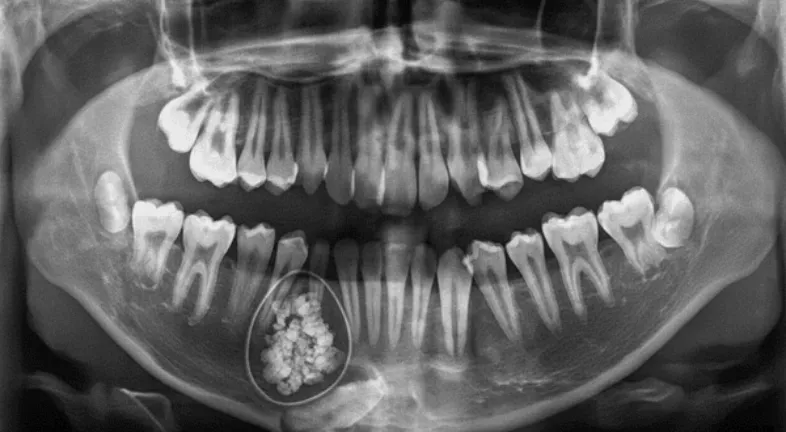.png)
Malocclusion is a fancy term for what we commonly call a "bad bite". It refers to the misalignment of teeth and jaws, and it comes in various forms. You might have heard of overbites, underbites, crossbites, open bites, crowding, spacing, and midline deviations. These issues can affect not just the look of your smile but also how your mouth functions. Fortunately, clear aligners, like Invisalign, have become a popular solution for these orthodontic problems. They're almost invisible, comfortable, and convenient, making them an attractive alternative to traditional braces.
Clear aligners have revolutionized orthodontic treatment by offering a discreet way to straighten teeth. Instead of metal brackets and wires, these aligners are made from a clear plastic material that fits snugly over your teeth. Over time, they gently move your teeth into the desired position. Let’s take a closer look at how these aligners work and how they can help correct different types of malocclusions.
.png)
So, how do clear aligners work their magic? The process involves a series of custom-made aligner trays that you switch out every one to two weeks. Each tray is slightly different from the last, gradually moving your teeth closer to their ideal positions. The secret lies in the controlled pressure they apply. By exerting gentle, consistent force on your teeth, aligners encourage bone remodeling, a natural process where bone tissue is broken down and rebuilt to accommodate the new positions of your teeth.
This precise movement is planned using advanced digital technology. Your orthodontist will take 3D scans of your teeth and create a detailed treatment plan. This plan maps out the exact movements of your teeth from start to finish, ensuring each aligner tray is designed to achieve specific goals.
A digital treatment plan is crucial for the success of clear aligner therapy. This plan not only visualizes the end result but also breaks down the journey into manageable steps. Using specialized software, your orthodontist can predict how your teeth will move and make adjustments as needed. This precision ensures that your treatment is as efficient and effective as possible.
The digital plan also allows you to see a virtual representation of your new smile before you even start wearing the aligners. It’s like a sneak peek at the results, which can be incredibly motivating. Knowing exactly what to expect helps you stay committed to wearing your aligners as prescribed, which is essential for achieving the best outcome.
An overbite, also known as a deep bite, is when the upper front teeth overlap significantly with the lower front teeth. This can cause wear on your teeth, jaw pain, and even speech issues. Clear aligners can effectively correct overbites, but there are some technical considerations to keep in mind.
Correcting an overbite with clear aligners often involves the use of attachments—small, tooth-colored bumps that are temporarily attached to your teeth. These attachments give the aligners extra grip, allowing them to apply more precise pressure to move the teeth. They’re especially useful for controlling the vertical movement needed to reduce the overlap of the front teeth.
While clear aligners can handle most overbites, severe cases might require additional treatments or even a combination of aligners and traditional braces. The complexity of the overbite can influence the treatment plan and duration.
Read more on Is it Necessary to Correct An Overbite? – Yes and Here’s Why
The treatment time for correcting an overbite with clear aligners usually ranges from 12 to 24 months, depending on the severity of the overbite and how well you adhere to wearing your aligners. Consistency is key—wearing your aligners for the recommended 20-22 hours per day will ensure the best and quickest results.
An underbite, or reverse bite, occurs when the lower teeth protrude past the upper teeth. This can affect chewing, speaking, and the overall appearance of your smile. Clear aligners can help, but underbite correction requires careful planning.
Correcting an underbite often involves using elastics—small rubber bands that connect the upper and lower aligners. These elastics provide the additional force needed to move the lower teeth back and the upper teeth forward. They’re an essential part of the treatment for achieving proper alignment.
Severe underbites may present limitations for clear aligners. In some cases, additional orthodontic appliances or even jaw surgery might be necessary to achieve the desired results. Your orthodontist will assess the severity of the underbite and recommend the best approach.
You can also find out How Much Does It Cost to Correct an Underbite by reading our detailed cost guide.
Treating an underbite with invisible braces typically takes 18 to 24 months. As with other malocclusions, the key to success is wearing your aligners as directed and maintaining good oral hygiene throughout the treatment.

A crossbite occurs when the upper teeth do not properly align with the lower teeth, either in the front (anterior crossbite) or the back (posterior crossbite). This misalignment can lead to uneven wear and jaw discomfort. Clear aligners can be effective in correcting crossbites.
To correct a crossbite, aligners may need to be designed with specific features to apply the right forces to the teeth. This may include the use of attachments or specific aligner designs to ensure proper movement.
The treatment time for crossbite correction with clear aligners generally ranges from 12 to 24 months, depending on the severity of the misalignment and the patient's adherence to the treatment plan.
An open bite is characterized by a gap between the upper and lower teeth when the mouth is closed. This can lead to difficulties in chewing and speaking. Clear aligners can help in closing the gap.
Correcting an open bite often requires careful planning and may involve the use of attachments to help move the teeth into the correct position. The treatment may also include the use of elastics to provide additional force.
The expected treatment time for open bite correction with clear aligners typically ranges from 12 to 18 months, depending on the individual case.
Crowding occurs when there isn’t enough space in the jaw for all the teeth to fit properly. This can cause teeth to overlap, twist, or become misaligned. Clear aligners are very effective at treating misaligned teeth by gradually creating space and aligning the teeth.
When treating crowding with clear aligners, the orthodontist may need to create space by using interproximal reduction (IPR), which involves removing small amounts of enamel between teeth. This allows the teeth to shift into better alignment without the need for extractions.
The treatment time for correcting crowding with clear aligners typically ranges from 12 to 24 months. Mild cases may be resolved quicker, while more severe crowding could take longer. As with all aligner treatments, wearing your aligners consistently and following your orthodontist’s instructions is key to achieving the best outcome.

Spacing issues occur when there are gaps between the teeth. Clear aligners can effectively close these gaps and create a more aesthetically pleasing smile.
To correct spacing, aligners are designed to gradually move the teeth closer together. This may involve the use of attachments to enhance the effectiveness of the aligners in closing gaps.
The expected treatment time for spacing correction with clear aligners usually ranges from 6 to 12 months, depending on the size of the gaps and the patient's adherence to the treatment plan.
Midline deviation occurs when the center of the upper front teeth does not align with the center of the lower front teeth. Clear aligners can help correct this misalignment.
Correcting midline deviation may require careful planning and the use of specific aligner designs to ensure that the teeth move into the correct position. Attachments may also be used to facilitate movement.
The treatment time for correcting midline deviation with clear aligners typically ranges from 6 to 12 months, depending on the complexity of the case and patient compliance.
Clear aligners offer a versatile and effective solution for various orthodontic issues, including overbites, underbites, crossbites, open bites, crowding, spacing, and midline deviations. With the right treatment plan and adherence to wearing the aligners, patients can achieve a straighter, healthier smile.
Find your clear aligner provider today!




Curated the best for your knowledge
 Odontomas: What They Are and How They're Treated
Odontomas: What They Are and How They're TreatedSome dental conditions are quiet. Too quiet, in fact. Odontomas fall into that category. They rarely make noise, yet they change things beneath the surface. And people usually have no idea about them. While malocclusions, teeth shifting, discoloration, or other cosmetic dental issues are fairly well known, odontomas are not. So, an odontoma is technically a type of tooth tumor. It’s benign, harmless, but oddly structured. Hence, it can interfere with tooth eruption, displace teeth, or cause swelling. However, there’s more to it. Here’s a deeper dive.
Read More.webp) Gingivitis Treatment: How to Reverse Early Gum Disease
Gingivitis Treatment: How to Reverse Early Gum DiseaseGingivitis tends to creep up quietly, usually after a stretch of rushed brushing or nights where flossing just slips your mind. The first sign is often bleeding when you spit toothpaste into the sink. That moment makes people Google how to cure gingivitis, which is honestly the right instinct. Early gum inflammation happens because plaque irritates the tissue around the teeth. If you respond quickly, it is fully reversible. Most cases improve quickly with proper cleaning, hydration and small tweaks in daily habits. The key is not ignoring those early red or puffy gum signals.
Read More.webp) Metallic Taste in Mouth: Causes and How to Get Rid of It
Metallic Taste in Mouth: Causes and How to Get Rid of ItHaving metal taste in the mouth first thing in the morning can be an unexpected experience. You wake up, take a swallow, and suddenly have a metallic taste in your mouth, as if you'd been chewing on a handful of change. It's annoying, a little scary, and sometimes for no apparent reason. For some people, it will be nothing but a minor nuisance; others may fall into the late-night goose chaser. Sometimes it's a sign that there is something wrong with your braces; other times, it could mean that there is something wrong with one of your teeth. But here's the good news: Most metallic tastes are temporary, harmless, and can be treated or resolved. So let's take a closer look at the possibilities.
Read MoreQuick Links

Heading